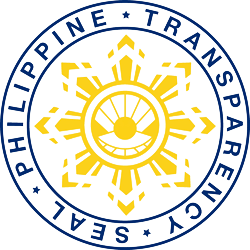The Philippine Board of Investments (BOI), the country’s lead industry development arm and primary investments promotion agency, met with Taytay-based garments and textile manufacturers and stakeholders for a roundtable discussion to gather insights on how the agency can assist in scaling up the garments industry in the area and make them more competitive.
Trade Undersecretary for Industry Development and Trade Policy Group and BOI Managing Ceferino Rodolfo led the discussion with the officers and members of the Baclaran Garment Producers, Inc. (BAGPI) and I Love Taytay Garments Producers, Inc. (IGPAI)—the two major garments manufacturer groups in Taytay, Rizal. Officials and representatives from the Philippine Chamber of Commerce–Taytay Chapter, the Taytay Municipal Government, the Department of Trade & Industry – Rizal Provincial Office, and the Department of Tourism – Rizal Provincial Office were also present in the meeting.
“Our garments industry used to be one of the top performing sectors both locally and internationally. But with the challenges brought by the end of the Multi-Fiber Agreement (MFA) which grants preferential tariffs to PH exports of garments and textiles, we saw a decline in the sector’s general performance,” said Undersecretary Rodolfo. “We however observed that while this is the overall state of the sector, the garments industry here in Taytay is thriving despite challenges, and we hope to replicate this successful model to other parts of the country,” he said.
In the roundtable discussion, the garment manufacturer groups informed BOI of the scarcity of laborers, particularly sewers. “Dress-making is no longer part of in the schools’ curriculum. Thus, we are having difficulties in serving the market demand,” said BAGPI President Manuel Cruz.
As most garment manufacturers in Taytay are still small scale and likely family-owned businesses passed on through generations, the group also explained branding have not been fully explored as this entails additional costs. “Most of the garment manufacturers here sell their items in bulk to retailers and online resellers. These retailers and resellers are often the ones putting the brand names to these items,” said a representative from IGPAI.
Garments manufacturing is one of the “silong” industries in Taytay with about 190 registered garment manufacturers, 52 remnant cloths sellers, 29 registered ready-to-wear (RTW) retailers, and 4,000 surveyed flea market sellers, according to a report by the Taytay Business License Processing Office.
The garments and textile industry in Taytay can be traced back from 1950s to 1960s when remnant textiles (aged textiles) from New York were imported through the efforts of the then Municipal Mayor who had easy access to suppliers and knowledge on customs procedure.
Sewers were mostly located in the ground floor of their houses to lessen overhead costs as well as permits and licensing requirements.
With increasing labor costs in the country, most of the garments manufacturers have moved to other ASEAN countries. The local industry continues to struggle in competing with second-hand clothes from developed countries (ukay-ukay) and Chinese-made garments and textiles. Factories in Taytay and in nearby areas like ITM, Gentex, UTEX, and Knit Joy ceased operations. Garment
manufacturers in Taytay is now relying heavily on imported remnants from China.
Undersecretary Rodolfo said the DTI and BOI can help in the possible sourcing of textiles from nontraditional sources such as Vietnam, Pakistan, and Turkey, upgrading their capabilities and expanding their markets.
After the meeting, Undersecretary Rodolfo and team made rounds at the ongoing Taytay Tiangge Night Market to witness the actual operations of industry players in the area. Flocked by thousands of buyers and resellers, about nine associations of garments producers and traders operate in the Taytay Tiangge namely BAGPI (400-1,000 stalls), Municipal Tiangge (800 stalls), Octagon (150), IGPAI (300-400), Maswerte (250), My Seoul (100-200), Freedom (200), Club Manila East (600-700), and Eugene (30).
“The information gathered from the roundtable discussion is very important to us. As we go around the country and conduct similar focused-group discussions with garments and textile industry players and stakeholders, these collected information will serve as substantive inputs to the Garments and Textile Industry Roadmap that we envision for the industry,” said Undersecretary
Rodolfo.
The BOI, through the Manufacturing Resurgence Program–Industry Roadmapping Project, is currently formulating the Garments and Textile Industry Roadmap. The roadmapping exercise involves defining the industry’s objectives, assessing it state and economic performance, identifying the binding constraints to its growth, and recommending strategies to achieve industry growth and competitiveness. The project involves the conduct of focused group discussions with stakeholders from the industry, government, and other relevant sectors and already, five discussions were conducted from December 2017 with various garments and textile stakeholders in some parts of the country. The discussion with Taytay garment stakeholders is sixth among these meetings.♦
Date of release: 10 July 2018



